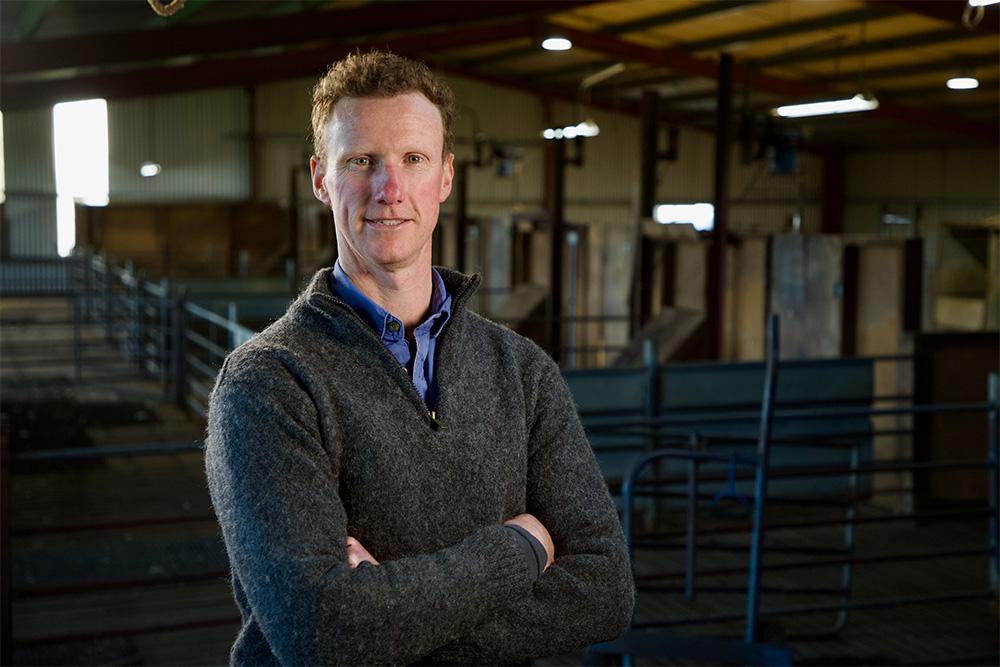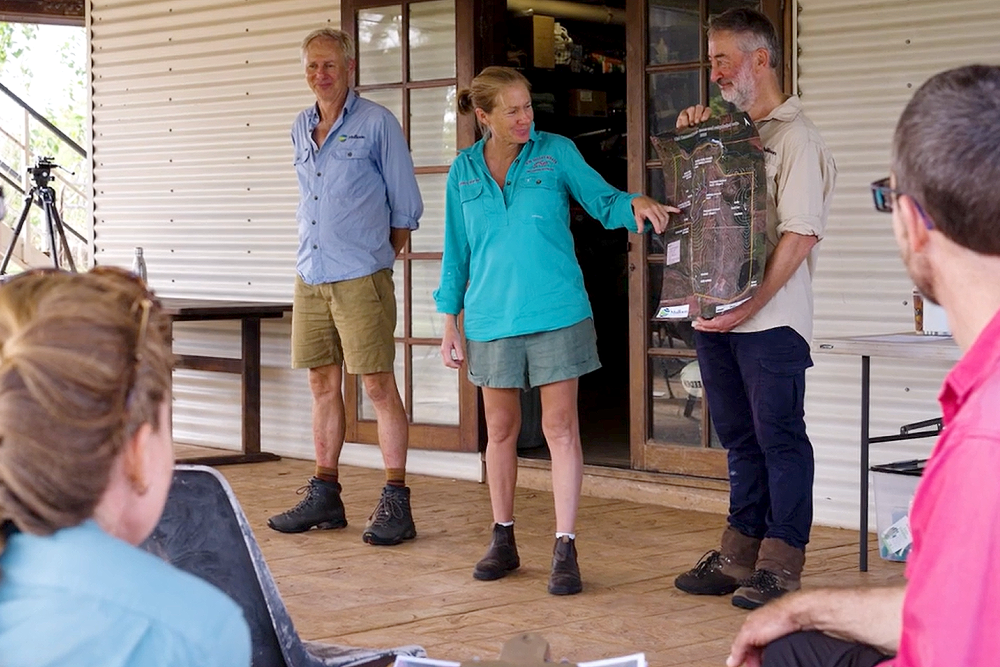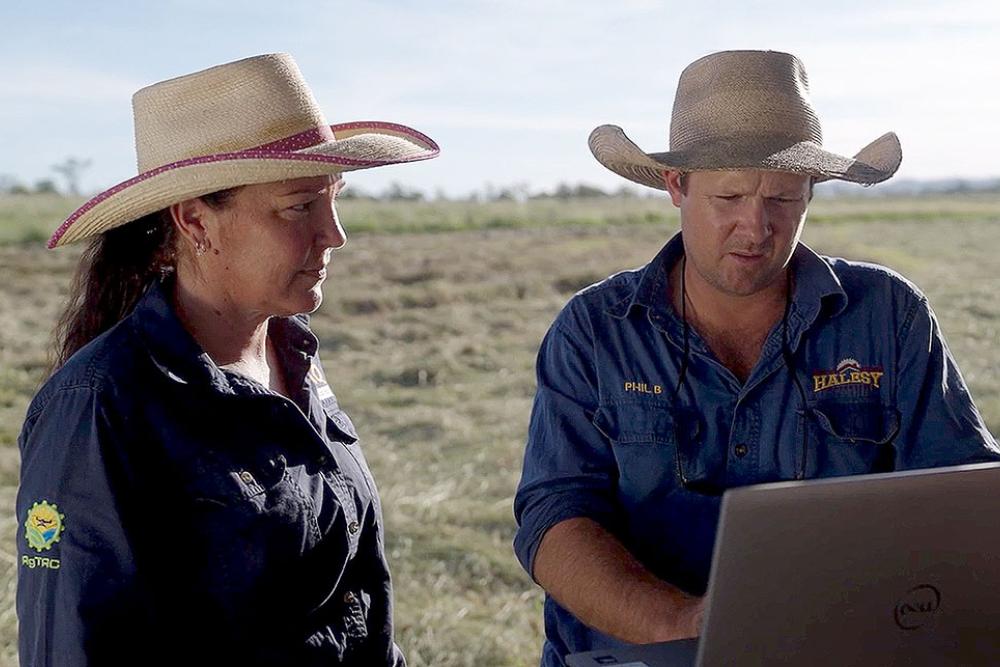The University of New England’s Jaimi-Lee Edwards knows farmers learn best alongside their peers as they work with experts on real-world problems.
That’s why Jaimi-Lee travels the Northern Tablelands of NSW as a pasture coach.
Jaimi-Lee can coach groups of farmers to better predict their pasture availability thanks to the Future Drought Fund’s Drought Resilient Soils and Landscapes Program.
Correctly estimating future pasture availability helps farmers make better stocking and land management decisions as conditions dry.
“At each of the early sessions we focussed on estimating herbage mass, ground cover and green content. We did this by visiting a range of pastures on different properties, taking pasture cuts to build confidence,” Jaimi-lee said.
“As the coach, I provided feedback to help make any changes to their assessments that were necessary.”
As the sessions continued, Jaimi-Lee focused on helping farmers incorporate long-range weather forecasts into their feed budgets to better predict future pasture and livestock performance.
“We’re enabling farmers to expand their planning that affects the next 6-months on their farm. This helps them know what their A, B and C plans look like—before decisions are critical.”
See how the Future Drought Fund supports Jaimi-Lee to coach farmers and get ahead of drying conditions
Video duration 4 mins 40 secs
Introduction
This is the transcript of a video case study produced by the University of New England for a project funded by the Future Drought Fund.
Learn more about the Future Drought Fund’s Drought Resilient Soils and Landscapes Program.
Transcript
[Recording begins]
Jaimi-Lee Edwards [0:01]:
Hi, I'm Jaimi-Lee and I have a few questions to ask you.
Do you have access to a 6-month climate forecast on a 5 km grid for your farm?
Do you know how much pasture your farm will have available six months from now?
Are you able to predict animal weight and condition score into the future to reach joining and sale targets?
As climate variability grows more extreme, these are some of the priorities graziers need to consider before the next big dry hits.
As a project officer and pasture coach with the University of New England I am working with farmers to answer some of these questions through the Drought Resilient Pasture Landscapes project.
Travelling between Deep Water and the south of Walcha on the Northern Tablelands, I'm coaching eight farmer groups representing 40 farms.
A large focus so far has been improving skills for pasture assessments and incorporating weather forecasts into feed budgets, accessible through the online tool, Ag360.
This enables farmers to expand their habits of planning and decision making that affects the next six months on their farm.
I emphasise what farmers can manage and the co-benefits of managing within the ideal levels of herbage mass. Through farmers managing for ideal herbage mass levels, ground cover, fewer weeds, rainfall runoff and improved soil health are all co- benefits we expect to see through this project.
Long-term adoption by producers is a key focus of mine and that's why I really want to create an excellent learning environment through this project.
Now I want to touch on a few key aspects from our project that have done this.
Number one and two: project length and personalised location.
The project utilises a coaching approach as we understand that farmers learn best when discussing real world problems with other participants.
Coaching sessions are held once every two months over 18 months and we visit participating farms on a rotating roster. Revisiting locations at a different time of year is a powerful tool to learn and reinforces previous session objectives.
At each of the early sessions we focused on estimating herbage mass, ground cover and green content. We did this by visiting a range of pastures on different properties.
As the coach, I supplemented this through pasture cuts to build confidence. I also provided feedback to make any changes to their assessments where necessary.
Number three is being available outside of coaching sessions to discuss anything that participants would like to further explore. These include management practices, grazing within the ideal minimum and maximum herbage mass levels and discussing the impacts this has on pasture growth, animal performance and the environment.
Number four: utilising the available tools to assist in making decisions. As the coaching sessions continue, I'm introducing the participants to the features that Ag360 has available.
It is not only a recording system, but you're able to access weather forecasts, pasture availability and animal performance looking 6-months ahead. This encourages planning for the future with confidence.
Users can take this one step further and look at the decision support tools. This looks at supplement feed versus animal performance and this powerful information can be used to evaluate timing of management practices, feed requirements and financial impacts of decisions.
Number five is adaptability to suit different properties. Each of the learning objectives suit a range of enterprises and management practices. This project has formed a template that can be used in other locations and we're excited to see how this can be implemented.
Number six: increasing knowledge. Increasing knowledge of the impacts of grazing management is a great first step to encouraging adoption. This not only affects production objectives, but it also contributes to ecosystem health.
This is why we engaged the aquatic ecology team from UNE to implement water sampling sites on participating farms. These sites are sampling for temperature, dissolved oxygen, nitrogen, phosphorus, and sediment. This information is being used to help educate farmers about indicators for aquatic ecosystem health.
You might ask how we're encouraging adoption beyond the life of the project?
We are creating an online community of practice to make project information and outcomes accessible via our project partner websites.
This is reinforced through the continued involvement from our project partners, GLENRAC, Southern New England Landcare and the Northern Tablelands Local Land Services as well as supporting farmers into the future.
My key message to farmers is to know what your A, B and C plans look like before decisions are critical. I encourage you to adapt these plans as required. I remind you to celebrate the good seasons and build your networks around you as support for when times get tough.
[Recording ends]



